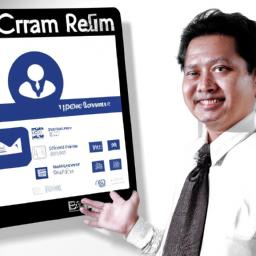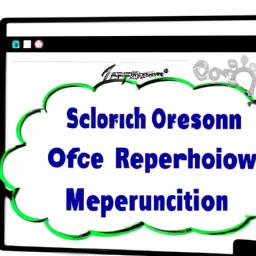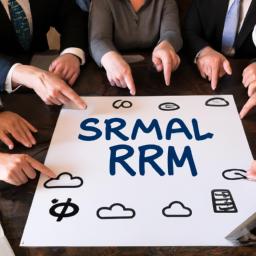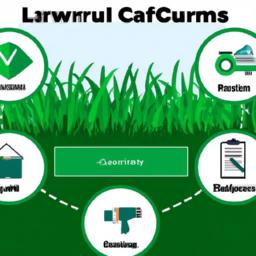A Good CRM System: Unlocking Business Success
Introduction
In today’s hyper-competitive business landscape, building and maintaining strong relationships with customers is more crucial than ever before. That’s where a good crm system comes into play. Whether you’re a small startup or an established enterprise, implementing a reliable CRM solution can be a game-changer for your business.
But why is a good CRM system so important? Well, imagine having all your customer data organized and easily accessible, tracking your sales pipeline effortlessly, and collaborating seamlessly with your team members – all from a single platform. That’s the power of a well-implemented CRM system.
Defining CRM Systems
Before we dive deeper, let’s quickly explore what a CRM system is all about. CRM stands for Customer Relationship Management, and it refers to the tools and strategies used by businesses to manage and analyze their interactions with existing and potential customers. At its core, a CRM system acts as a centralized hub where businesses can store, track, and utilize customer data to enhance their overall customer experience.
But a good CRM system goes beyond just data management. It’s a comprehensive solution that empowers businesses to streamline their processes, automate repetitive tasks, and gain valuable insights to make informed decisions. In essence, it serves as the backbone of your customer-centric operations, enabling you to deliver exceptional service and drive growth.
In the upcoming sections, we’ll delve deeper into the key features of a good CRM system, the benefits it offers, factors to consider when choosing one, and popular CRM systems in the market. So, fasten your seatbelt as we embark on this journey to unleash the full potential of a good CRM system.
Key Features of a Good CRM System
In order to fully grasp the impact and value of a good CRM system, let’s explore its key features that empower businesses to thrive in today’s competitive landscape.
A. Customer Data Management
A good CRM system acts as a centralized repository, allowing businesses to efficiently store and manage customer data. From basic contact information to detailed purchase history, a robust CRM system ensures that all relevant customer data is accessible at your fingertips. This feature enables personalized interactions, helping businesses understand their customers better and build stronger relationships.
B. Lead and Sales Tracking
Tracking leads and managing sales pipelines can be a daunting task without the right tools. A good CRM system simplifies this process by providing a structured framework to track leads and monitor sales activities. With features like lead scoring, opportunity tracking, and automated follow-ups, businesses can effectively prioritize and nurture leads, leading to increased conversion rates and revenue growth.
C. Communication and Collaboration Tools
Effective communication and collaboration are vital for successful customer relationship management. A good CRM system offers integrated communication tools, such as email integration, live chat, and task management, allowing teams to collaborate seamlessly. By centralizing all communication within the CRM platform, businesses can ensure that every interaction is logged and accessible, fostering efficient teamwork and enhanced customer service.
D. Integration with Other Business Systems
A good CRM system doesn’t operate in isolation but seamlessly integrates with other essential business tools. Integration with marketing automation platforms, email marketing software, and customer support systems enables businesses to streamline workflows and maintain consistency across multiple touchpoints. This integration ensures a unified customer experience and helps businesses leverage the full potential of their existing tools.
E. Reporting and Analytics Capabilities
Data is the fuel that drives informed decision-making. A good CRM system provides robust reporting and analytics capabilities, enabling businesses to derive actionable insights from their customer data. From tracking sales performance and campaign effectiveness to identifying trends and forecasting future opportunities, these features empower businesses to make data-driven decisions that fuel growth and profitability.
Now that we’ve explored the key features of a good CRM system, let’s move on to the next section to uncover the multitude of benefits it brings to businesses.
Factors to Consider when Choosing a Good CRM System
In the vast ocean of CRM systems available in the market, finding the perfect fit for your business can be a daunting task. To ensure you make a well-informed decision, it’s essential to consider several key factors when evaluating different CRM options. Let’s explore these factors in detail:
A. Scalability and Flexibility
As your business grows, so will your customer base and data requirements. Therefore, it’s crucial to choose a CRM system that can scale seamlessly with your evolving needs. Look for a solution that offers flexible pricing plans and the ability to accommodate a growing number of users and data volumes. Additionally, consider whether the CRM system can adapt to your unique business processes and workflows, allowing for customization and configuration.
B. User-Friendliness and Ease of Adoption
No matter how feature-rich a CRM system may be, it won’t be effective if your team struggles to use it. Opt for a CRM solution that prioritizes user-friendliness and offers an intuitive interface. The system should be easy to navigate, with clear instructions and minimal training requirements. A user-friendly CRM system ensures a smooth adoption process, allowing your team to quickly embrace and leverage its capabilities.
C. Customization and Integration Capabilities
Every business has its own specific needs and processes. Therefore, choose a CRM system that allows for customization and integration with other essential business tools. Look for features like customizable fields, workflow automation, and API integrations. The ability to tailor the CRM system to align with your unique requirements and seamlessly integrate with existing software will maximize its value and efficiency.
D. Security and Data Privacy Measures
With the increasing importance of data protection, it’s crucial to prioritize the security and privacy of your customer information. Ensure that the CRM system you choose adheres to industry-standard security protocols, such as data encryption and regular backups. Additionally, consider if the CRM provider complies with relevant data protection regulations, such as GDPR or CCPA, to safeguard your customers’ personal information.
E. Cost and Return on Investment
Last but not least, consider the cost implications and the potential return on investment (ROI) of the CRM system. Evaluate the pricing structure, including any upfront fees, subscription costs, and additional charges for add-ons or customizations. Compare the features and benefits offered by different CRM systems to assess their long-term value and determine if the investment aligns with your business goals.
By carefully considering these factors, you can select a CRM system that not only meets your current needs but also accommodates future growth while delivering a strong ROI for your business. So, take your time to evaluate the options and choose wisely.
Popular CRM Systems in the Market
When it comes to choosing a CRM system, the market offers a plethora of options to suit different business needs. Let’s take a closer look at three popular CRM systems and what they bring to the table:
CRM System A
-
Overview and Key Features
CRM System A is a robust solution designed to streamline customer management processes. It offers a user-friendly interface and a range of features to meet the diverse needs of businesses. Key features include:
- Customer data management: Easily store and access customer information, including contact details, purchase history, and communication logs.
- Lead and sales tracking: Track leads through the sales pipeline, monitor deal progress, and forecast revenue.
- Communication and collaboration tools: Facilitate seamless internal communication and collaboration among team members.
- Integration with other business systems: Integrate with popular tools and platforms such as email marketing software, accounting systems, and e-commerce platforms.
- Reporting and analytics capabilities: Generate detailed reports and gain insights into sales performance, customer behavior, and marketing campaigns.
-
Pros and Cons
Pros:
- Intuitive user interface for easy adoption
- Extensive customization options
- Robust reporting and analytics capabilities
Cons:
- Limited third-party integrations
- Higher pricing compared to some competitors
-
Pricing Options
CRM System A offers different pricing plans based on the needs and size of your business. Pricing options range from basic plans for small businesses to enterprise-level solutions with advanced features.
CRM System B
-
Overview and Key Features
CRM System B is a feature-rich CRM solution designed to optimize sales and customer management. Its comprehensive set of features includes:
- Customer data management: Centralize customer information and track interactions for a 360-degree view.
- Lead and sales tracking: Monitor leads, deals, and sales pipelines to drive efficiency and revenue growth.
- Communication and collaboration tools: Foster collaboration among team members through shared calendars, task management, and document sharing.
- Integration with other business systems: Seamlessly connect with popular tools such as email marketing platforms, customer support systems, and e-commerce platforms.
- Reporting and analytics capabilities: Generate real-time reports and gain insights into sales performance, customer behavior, and revenue forecasts.
-
Pros and Cons
Pros:
- Robust feature set for comprehensive CRM capabilities
- Seamless integration with other business systems
- Advanced reporting and analytics functionalities
Cons:
- Steeper learning curve for new users
- Higher pricing for advanced plans
-
Pricing Options
CRM System B offers various pricing plans tailored to different business sizes and requirements. Pricing options range from affordable plans for startups to enterprise packages with advanced features and dedicated support.
CRM System C
-
Overview and Key Features
CRM System C is a user-friendly CRM solution designed for businesses of all sizes. Its key features include:
- Customer data management: Store and organize customer data, including contact information and communication history.
- Lead and sales tracking: Manage leads, sales opportunities, and pipelines for effective sales management.
- Communication and collaboration tools: Facilitate team collaboration through shared calendars, task management, and file sharing.
- Integration with other business systems: Connect with popular tools such as email marketing platforms, help desk software, and project management tools.
- Reporting and analytics capabilities: Generate reports on sales, customer activity, and campaign performance.
-
Pros and Cons
Pros:
- User-friendly interface for quick adoption
- Affordable pricing plans for businesses of all sizes
- Seamless integration options
Cons:
- Limited customization capabilities
- Advanced reporting features may be limited in lower-tier plans
-
Pricing Options
CRM System C offers flexible pricing plans to cater to different business needs. Pricing options include monthly and annual subscriptions, with varying features and levels of support.
These are just a few examples of popular CRM systems available in the market. Each system has its own strengths and weaknesses, so it’s important to evaluate your specific business requirements before making a decision. Keep in mind factors such as scalability, ease of use, customization options, and pricing to find the CRM system that best aligns with your business goals.








